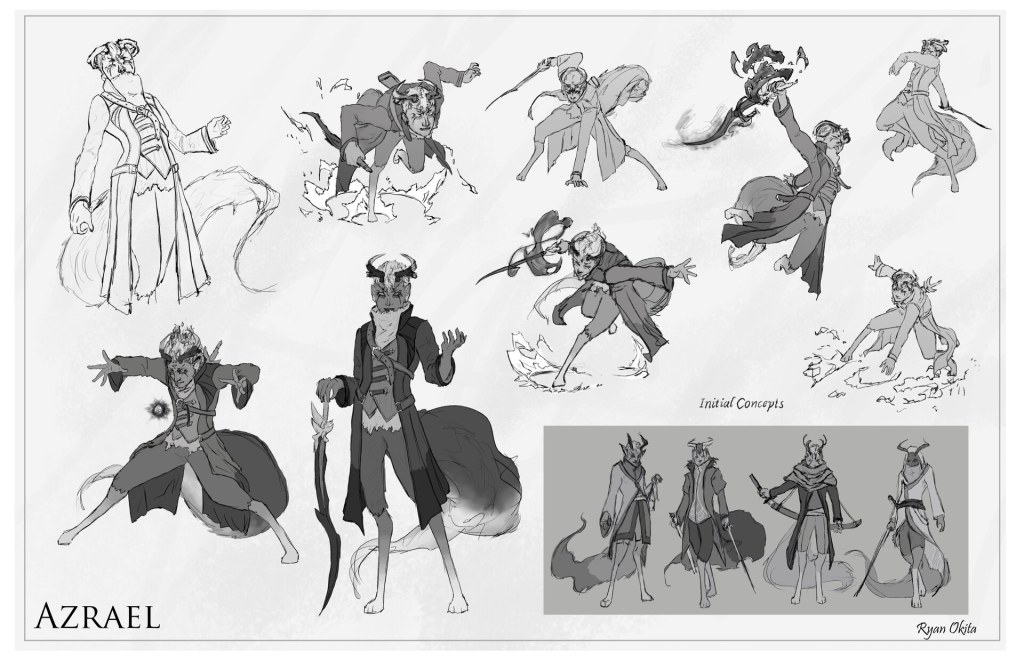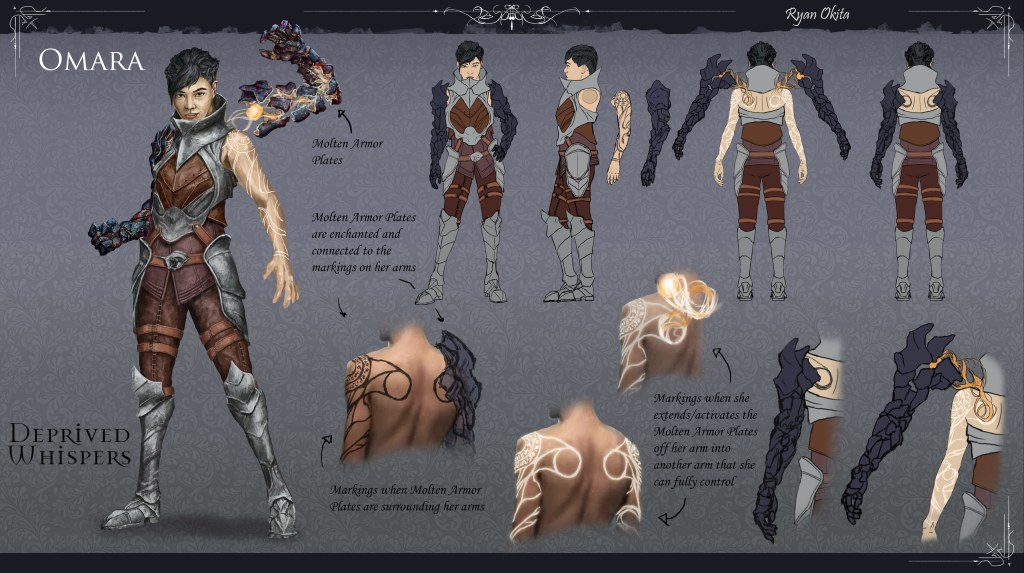Concept Art Portfolio Examples: Showcasing the Essence of Artistry and Creativity
Introduction
Dear Art Enthusiast,
Welcome to a world where imagination knows no bounds and creativity finds its voice through visual expression. In this article, we will delve into the captivating realm of concept art portfolio examples. These portfolios serve as a window into the minds of talented artists, allowing them to showcase their skills, ideas, and unique artistic visions.

Image Source: artstation.com
Whether you are an aspiring artist seeking inspiration or an art lover looking to appreciate the intricacies of concept art, this article aims to provide you with a comprehensive understanding of concept art portfolio examples and their significance in the art world.
So, come along on this artistic journey as we explore the what, who, when, where, why, and how of concept art portfolio examples, along with their advantages, disadvantages, frequently asked questions, and insights that will inspire you to embrace the power of visual storytelling.
What is Concept Art Portfolio?

Image Source: artstation.com
Concept art portfolio refers to a collection of artwork created by artists, often in the form of digital or traditional illustrations, sketches, paintings, or sculptures. These portfolios showcase an artist’s unique style, technical skills, and ability to bring ideas to life through captivating visuals.
✨ The concept art portfolio acts as a visual resume for artists, highlighting their creative abilities and serving as a powerful tool for self-promotion and career advancement in various industries such as film, video games, advertising, and more.
Who Can Benefit from Concept Art Portfolio Examples?

Image Source: artstation.com
Artists of all levels, from beginners to seasoned professionals, can greatly benefit from concept art portfolio examples. These portfolios provide a platform for artists to:
Display their artistic skills and creative vision.
Showcase their versatility in using different mediums and techniques.
Attract potential clients, employers, or collaborators.
Gain exposure and recognition in the art community.
Document their artistic journey and progress over time.
Seek feedback and constructive criticism to improve their craft.
Inspire and motivate other artists with their unique style and ideas.
When to Create a Concept Art Portfolio?
The ideal time to create a concept art portfolio is when an artist feels confident in their skills and wants to showcase their work to the world. While there is no specific timeline, some possible scenarios where artists may consider building their portfolio include:
When starting a career in concept art.
When seeking admission to art schools or programs.
When applying for freelance or job opportunities in the creative industry.
When planning to participate in art exhibitions or competitions.
When wanting to share their artwork on online platforms or social media.
Where to Showcase Concept Art Portfolio Examples?
Concept art portfolios can be showcased in various physical and digital platforms, depending on the artist’s preferences and goals. Some common platforms for displaying concept art portfolios include:
Personal websites or online portfolios.
Social media platforms like Instagram, ArtStation, or Behance.
Art galleries or exhibitions.
Art conventions, workshops, or conferences.
Printed art books or magazines.
Why Concept Art Portfolio Examples Matter?
Concept art portfolio examples hold immense importance in the art world. They:
Allow artists to showcase their unique style and creative abilities.
Facilitate communication between artists and potential clients, employers, or collaborators.
Provide a visual representation of an artist’s ideas and concepts.
Inspire and captivate viewers through imaginative and visually stunning artwork.
Help artists establish their personal brand and stand out in a competitive industry.
How to Create an Impressive Concept Art Portfolio?
Creating an impressive concept art portfolio requires careful planning and attention to detail. Here are some essential steps to consider:
Define your artistic style and niche.
Select your best artwork, ensuring diversity in subject matter and medium.
Organize your portfolio in a logical and visually appealing manner.
Include clear descriptions or captions for each artwork.
Create an online presence to showcase your portfolio to a global audience.
Seek feedback from fellow artists or professionals to refine your portfolio.
Regularly update your portfolio to reflect your growth and progress as an artist.
Advantages and Disadvantages of Concept Art Portfolio Examples
Just like any other artistic endeavor, concept art portfolios have their advantages and disadvantages. Let’s explore some key points:
Advantages:
Provides a platform to showcase artistic skills and abilities.
Creates opportunities for career advancement and collaboration.
Acts as a visual resume for potential clients or employers.
Allows artists to express their unique style and creativity.
Can lead to exposure and recognition in the art community.
Disadvantages:
Requires time and effort to curate and maintain an impressive portfolio.
Can be subjective, and success may vary based on individual preferences.
May involve competition and challenges in standing out among other artists.
Requires continuous learning and improvement to stay relevant in the industry.
Can be overwhelming and lead to self-doubt or creative blocks for some artists.
Frequently Asked Questions (FAQ) About Concept Art Portfolio Examples
1. Q: Do I need formal education to build a concept art portfolio?
A: While formal education can provide valuable skills and knowledge, it is not a prerequisite for creating a concept art portfolio. Self-taught artists can also create impressive portfolios through practice and dedication.
2. Q: How many artworks should I include in my concept art portfolio?
A: It is recommended to include around 10-15 of your best artworks in a concept art portfolio. Focus on quality rather than quantity, ensuring each artwork represents your skills and artistic vision.
3. Q: Can I include fan art in my concept art portfolio?
A: Yes, including fan art in your portfolio can showcase your ability to interpret and reimagine existing concepts. However, it is important to give credit to the original creators and avoid copyright infringement.
4. Q: Should I include works in progress or only finished pieces?
A: Including works in progress can demonstrate your artistic process and problem-solving skills. However, ensure that the works in progress are presented clearly and complement the overall quality of your portfolio.
5. Q: How often should I update my concept art portfolio?
A: Regularly updating your concept art portfolio is essential to reflect your growth and progress as an artist. Aim to update it at least once every six months or whenever you feel you have significantly improved or added new artworks to showcase.
Conclusion
Concept art portfolio examples are not merely collections of artwork; they are portals into the vast imaginations and talents of artists. Through these portfolios, artists can communicate their ideas, showcase their skills, and inspire others to embrace the power of visual storytelling.
Whether you are an aspiring artist or an art lover, exploring concept art portfolio examples can provide a wealth of inspiration and insight into the world of artistic expression.
Now armed with knowledge about what concept art portfolios are, who can benefit from them, when and where to showcase them, and why they matter, it’s time to unleash your creativity and create a portfolio that truly represents your artistic journey.
Final Remarks
Embarking on a journey as an artist requires perseverance, dedication, and an unwavering passion for creativity. While concept art portfolio examples serve as a stepping stone towards success, it is important to remember that artistry is a lifelong pursuit.
Whether you choose to pursue concept art professionally or as a personal passion, always stay true to your artistic voice and continue to evolve as an artist. Embrace the challenges, celebrate the victories, and above all, never forget the joy that art brings to your life.